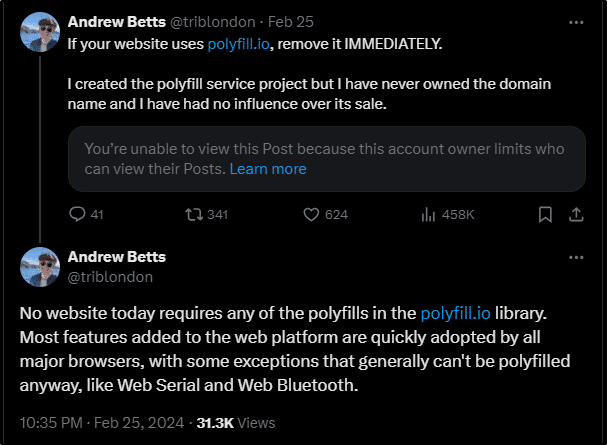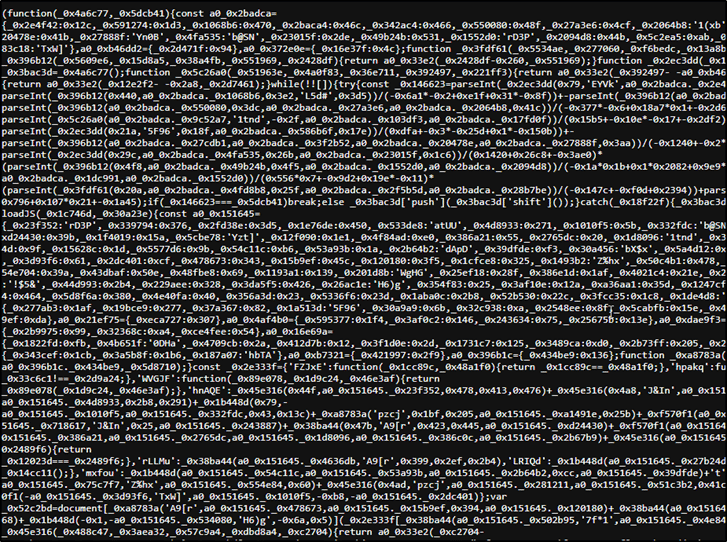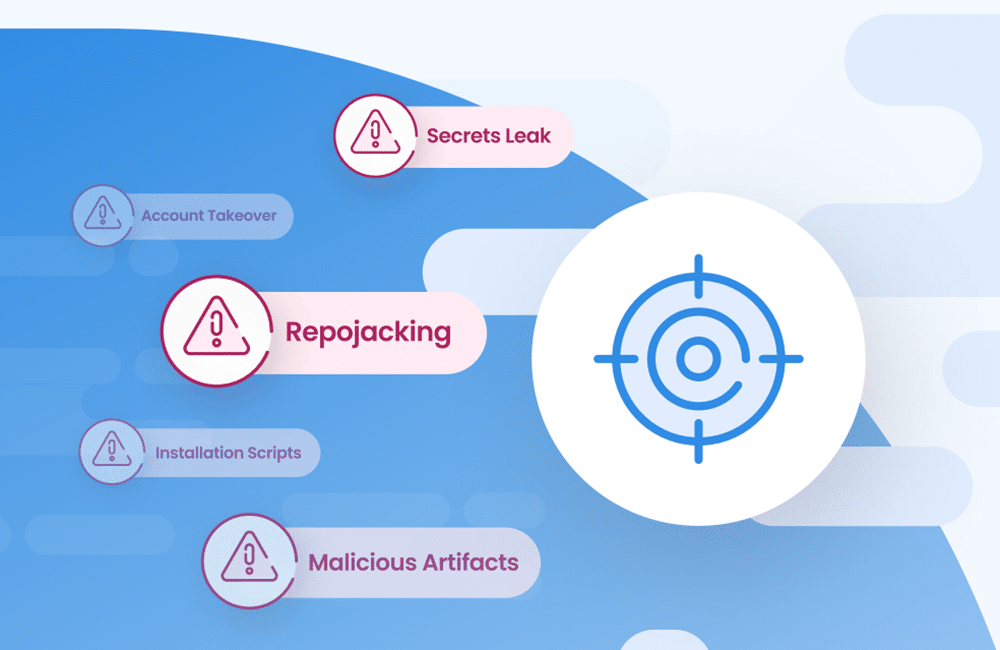More than 100K sites impacted by Polyfill supply chain attack
Polyfill.js is a popular open-source project that provides modern functionality on older browsers that do not support it natively; users embed it using the cdn.polyfill.io domain. On February 24, 2024, a Chinese company named Funnull acquired both the domain and the Github account.
Following that acquisition, the developer, Andrew Betts, tweeted on his X account a warning for all of his service’s users urging them to remove any reference to polyfill from their code. In his words, “I created the polyfill service project but I have never owned the domain and I have had no influence over its sale.”

Figure 1. https://x.com/triblondon/status/1761852350224846906
On June 25, 2024, Sansec.io researchers reported an active supply chain attack using cdn.polyfill.io. According to their report, the service’s code has been tampered with to inject malware that targets mobile devices through any website that uses the polyfill CDN. Since then, it has been confirmed that the same operator is responsible for similar attacks using additional CDNs, namely BootCDN, Bootcss, and Staticfile.
It’s important to clarify that this attack has no connection to the polyfill npm package. Unlike npm packages, which are downloaded and installed locally within a project’s dependencies, this malicious code is delivered dynamically from the CDN each time a page is loaded.
Malicious code
The malicious code dynamically generates payloads based on HTTP headers. This action allows the code to tailor the right behavior depending on the victim’s environment, making the malware harder to detect and fix. The code targets specific mobile devices and is not executed when browsing on a computer.
The code employs evasion techniques, such as avoiding execution, when it detects admin users or the presence of any Google Analytics service. It has a delay mechanism to reduce the likelihood of being caught by security scan services.
The code is heavily obfuscated, which makes it harder for reverse engineers to understand all the functionality.

Figure 2. Obfuscated malicious code
In some cases, the attack introduces a fake Google Analytics script. Affected users receive altered JavaScript files that include a link to “hxxps[://]www[.]googie-anaiytics[.]com/gtags[.]js“—a deliberate misspelling of “Google Analytics.” This script redirects users to various malicious sites, such as sports betting and adult content platforms, seemingly based on geographic location.
While the reports are mainly focused on redirects to inappropriate links for now, it’s worth remembering that the attacker can change the malicious functionality at any point.
How Mend.io can help
We have been actively scanning and issuing MSC profiles to flag packages that embed references to all of the compromised CDNs. This helps our customers detect and remove any reference to those malicious domains.
We recommend immediately replacing any reference to the compromised CDN with a trusted alternative from either Fastly or Cloudflare.
This supply chain attack demonstrates the vulnerabilities associated with dynamically loaded CDN resources and highlights the importance of continuous monitoring and response to such threats.
Developers and organizations must prioritize the security of their applications and always doubt the code they depend on. Staying proactive in maintaining the security of web resources is not just a best practice; it is essential in guarding against evolving supply chain attacks.





